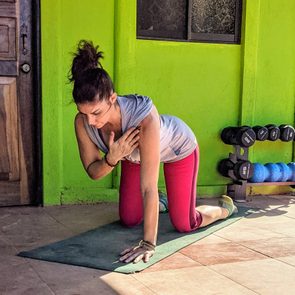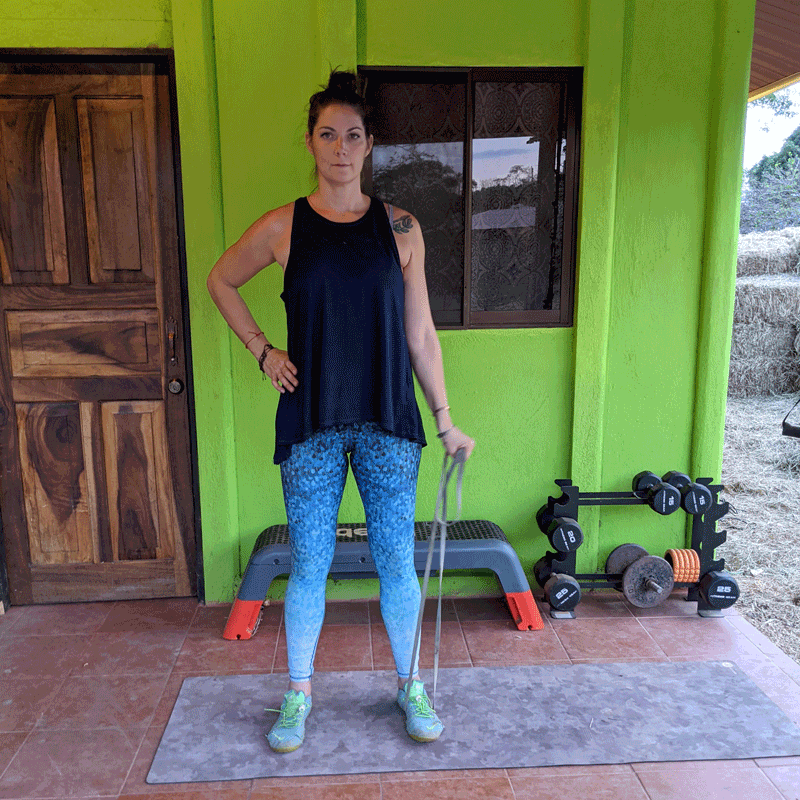4 Deltoid Stretches for Shoulder Pain and Tightness
Updated: Jun. 10, 2021
Workouts, desk jobs, poor posture—these can all lead to tight deltoids. Try these stretches to loosen your delts and alleviate pain.
Limber up with a deltoid stretch
If you’ve been experiencing tightness whenever you lift your arms over your head and you just can’t seem to reach as high as you used to, chances are your deltoids could use some stretching.
Your deltoids, more commonly referred to as your shoulder muscles, are a major muscle group that hugs your shoulder on all sides. You have three separate muscles in this group, which folks in the field of biology refer to as “heads.”
- Anterior deltoid: The muscle that runs in front of the shoulder.
- Lateral deltoid: The muscle that runs across the top of the shoulder.
- Posterior deltoid: The muscle that runs behind the shoulder.
These muscles connect your collarbone and shoulder blade to your upper arm. As such, almost any time you’re moving your upper arm (whether lifting, rotating, flexing, or extending), the deltoids are typically involved.
Common causes of tight deltoids
One thing to remember when talking about the shoulders (and the deltoids) is that they get a lot of use.
The shoulder is a highly mobile joint that’s engaged in lots of everyday motions, whether you’re swinging your arms while walking or jogging, waving down a taxi, or doing the shoulder press at the gym.
As such, John Gallucci Jr., a physical therapist and the CEO of Jag-One Physical Therapy in Woodbridge, New Jersey, points to overuse and injury as the most common causes of deltoid tightness.
“Those who use their deltoid muscle repetitively, most commonly athletes, tend to have an increased risk of deltoid pain,” he says. But it’s not the only possible cause.
With desk jobs, long commutes, and poor posture as cornerstones of modern life, something as simple as constant slumping could be contributing to tightness, particularly at the front of the shoulder.
(Use these moves to fix rounded shoulders.)
Why you shouldn’t ignore deltoid tightness
The delts are frequently used, so if you’re plagued by chronic tightness, it’s only a matter of time before that tightness spreads to surrounding muscles and structures.
“Chronically tight delts can lead to back pain, as tight delts are often caused by poor posture,” Gallucci says. But that’s not all.
The slouching that contributes to this tightness can place pressure between your shoulder blades, crawling up the kinetic chain to your neck.
And, of course, neck pain can contribute to headaches and poor sleep, all of which Gallucci says are prime reasons to proactively take steps to fix your posture.
(Try these headache relief exercises.)
Deltoid stretch to relieve tightness
The good news is that a combination of improved posture and a regular stretching routine designed to help attain or maintain proper range of motion at your shoulder can do wonders for easing tension and preventing pain.
Just remember: it’s important to target all three heads of your deltoid when adding stretches to your routine to aim for balance across the shoulder joint.
That said, it’s completely fine to spend a little more time on the areas that feel particularly tight. And for most people, that tends to be the anterior deltoid, due to the forward-rounded shoulders that tend to develop with chronic slouching.
Try adding these deltoid stretches to your daily exercise program to help ease the tightness and prevent pain.
Dynamic bear hug stretch
The dynamic bear hug stretches your anterior and posterior deltoid as well as your chest.
This is a good movement to perform before a workout as a way to help warm up the shoulder and prepare it for work.
The key thing to remember here is that you’re not trying to overstretch your shoulder or force it past its current range of motion. Instead, you’re moving to the end of the range of motion and back again in a controlled manner.
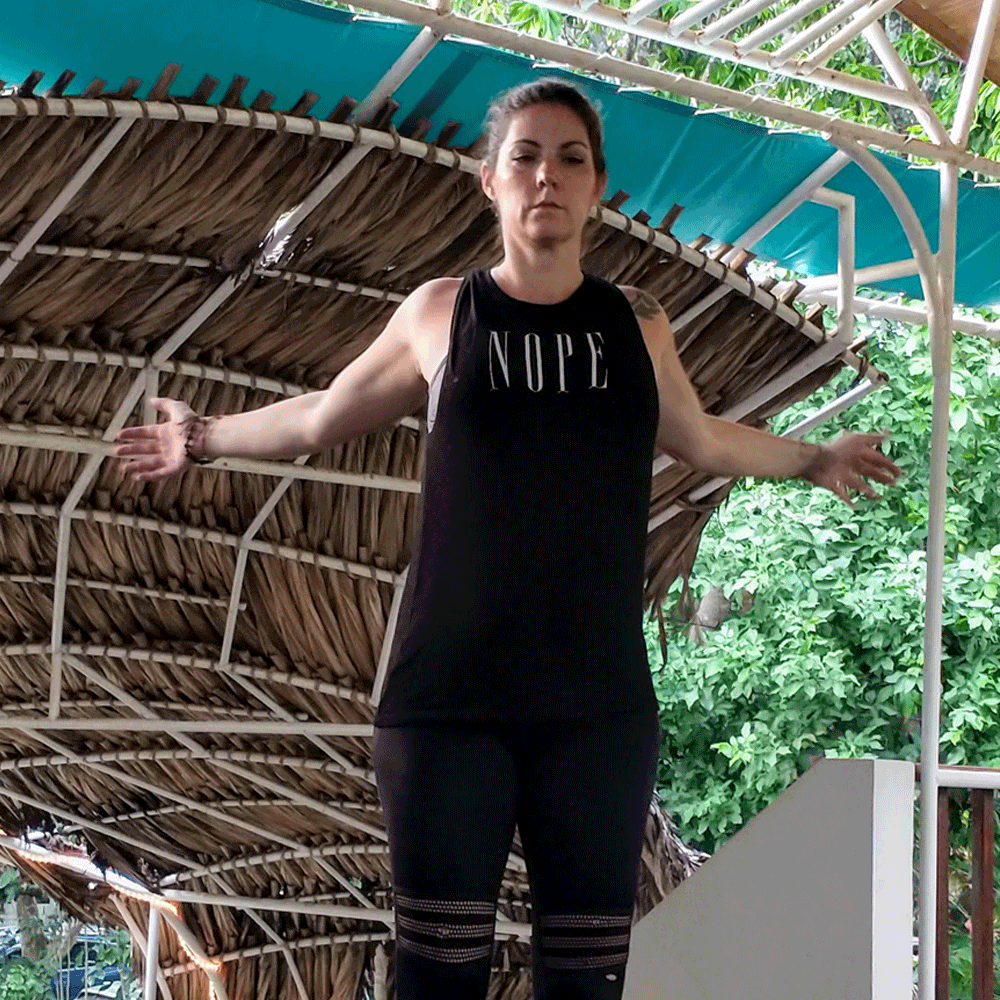
How to do it
Stand tall with your feet roughly shoulder-width apart, your core engaged, and your posture tall and straight.
Reach your arms out and wide, as though you were going to give someone a hug.
When you feel a light stretch across the front of your shoulders and chest, bring your arms across your chest, hugging yourself, your right arm on top of your left, until you feel a stretch at the back of your shoulders.
In a controlled motion, swing your arms out wide again. Reach the end of your range of motion before you swing your arms back into a hug position, this time with your left arm on top of your right.
Continue for 30 seconds. Rest, then repeat two more rounds.
(Need to stretch your chest more? Try these chest stretches.)
Standing chest and shoulder stretch
This is an excellent way to stretch out the front of your shoulders (your anterior delts).
If you find it difficult to perform with your hands together, you can do the same stretch while holding a towel or belt between your hands, allowing your hands to have space between them as you do the stretch.
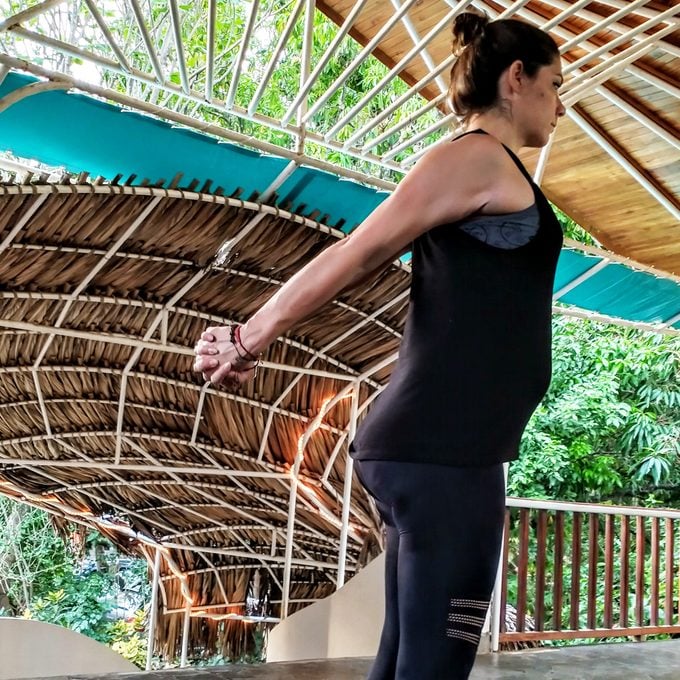
How to do it
Stand tall with your feet roughly hip-distance apart, your core engaged, and your shoulders back. Focus on maintaining good posture.
Reach behind your back with both arms and clasp your hands together.
Take a breath in, and as you exhale, lift your hands behind you as high as you comfortably can until you feel a good stretch across the front of your shoulders and chest.
Hold the position, breathing deeply for 30 seconds. Release, then repeat two more times.
(Fix shoulder pain with these exercises.)
Cross-body shoulder stretch
It’s a little harder to target the lateral deltoids, but the simple cross-body shoulder stretch (one you’re probably familiar with) can do the trick.
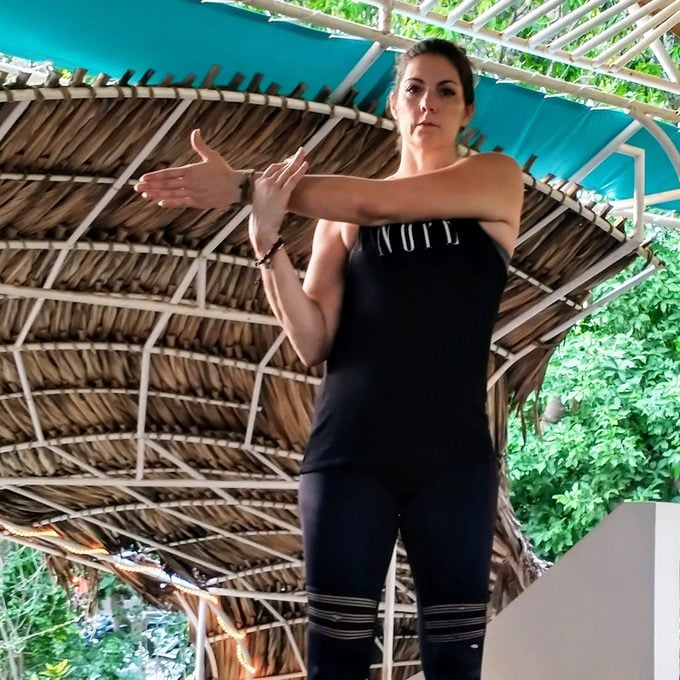
How to do it
Stand tall with your feet hip-distance apart and your core engaged. Aim for good posture: stack your ears over your shoulders, hips, knees, and ankles.
Bring your left arm across your body at shoulder height, reaching past your right shoulder. Use your right hand to grab your left forearm.
Gently pull your left arm closer to your body until you feel a stretch toward the middle of your left shoulder.
Hold the position, breathing deeply, for 30 seconds.
Rest, then repeat two more times before switching sides.
(Target your triceps with these stretches.)
Modified downward dog
The modified downward dog is another good exercise to target the chest and anterior delts. And it’s a good way to enhance posture because it also stretches your hamstrings, glutes, and low back.
Plus, it’s easy to perform at work at your desk, making it a nice “comfort stretch” when you need to take a break from the computer.
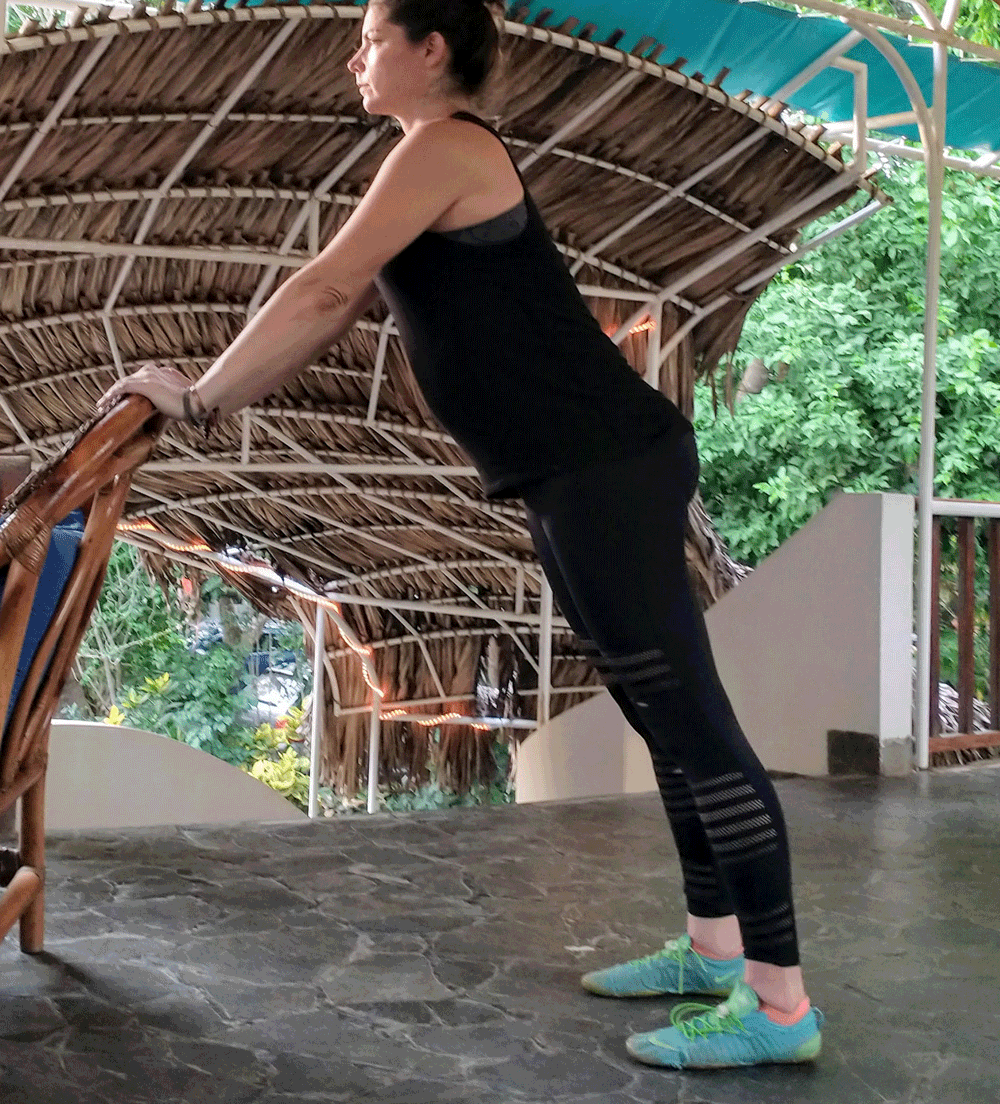
How to do it
Stand tall behind a sturdy desk, table, or chair. Keep your feet roughly hip distance apart.
Engage your core and roll your shoulders back to make sure you’re standing with good posture.
Place your hands flat on top of the desk, your arms extended fully. You’ll be keeping your arms, back, and legs fully extended throughout this stretch, only flexing at the hips.
Take a deep breath in, and as you exhale, begin walking your feet back until your body forms a diagonal line. From here, tip your torso forward and press your hips back, extending your arms over your head as you move.
When you feel a good stretch at the front of your shoulders and chest (as well as through your hamstrings and glutes), hold the position.
Breath deeply and try to relax into the stretch for 30 seconds.
Release, then repeat two more times.
Next, try these stretching exercises for stress relief.





















